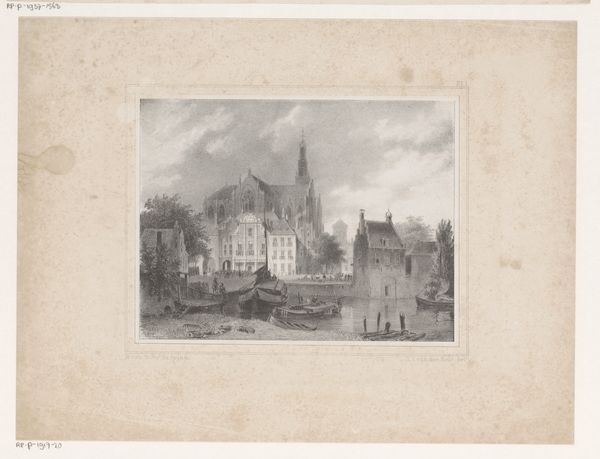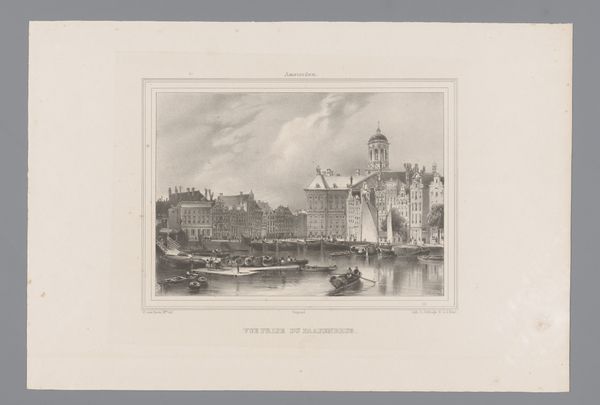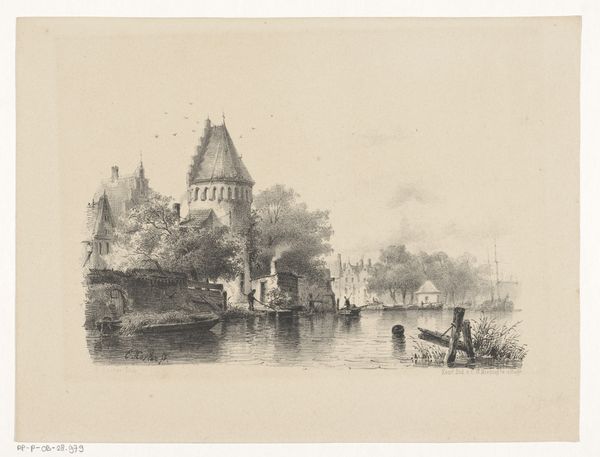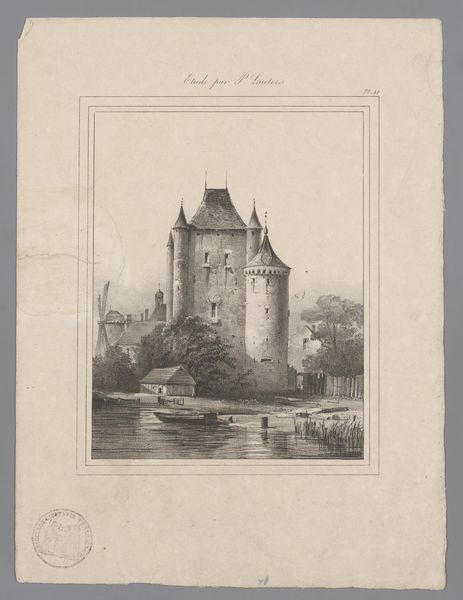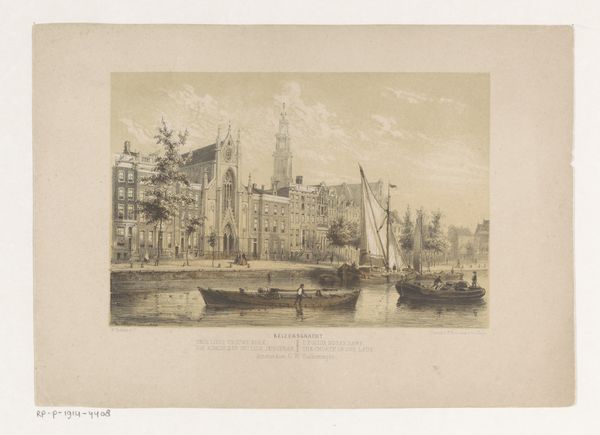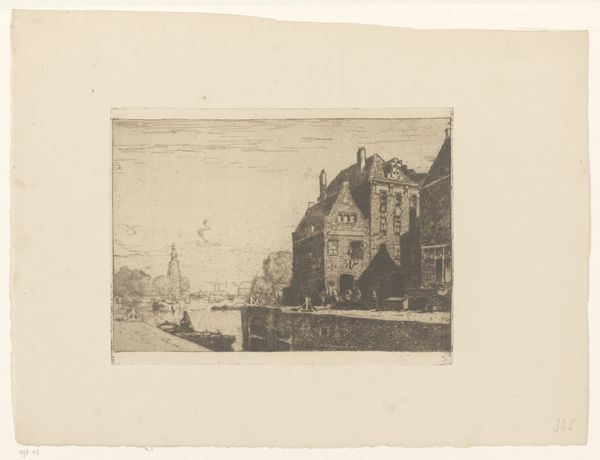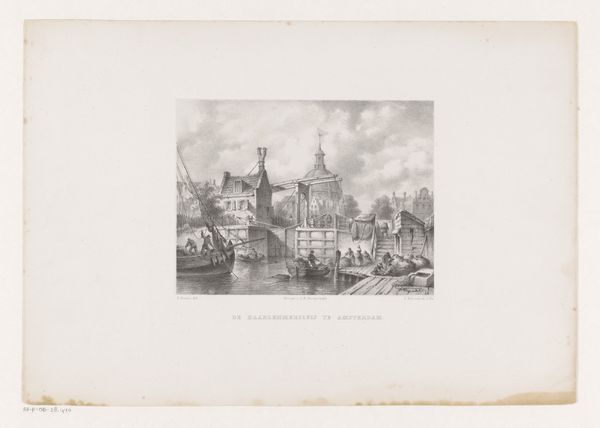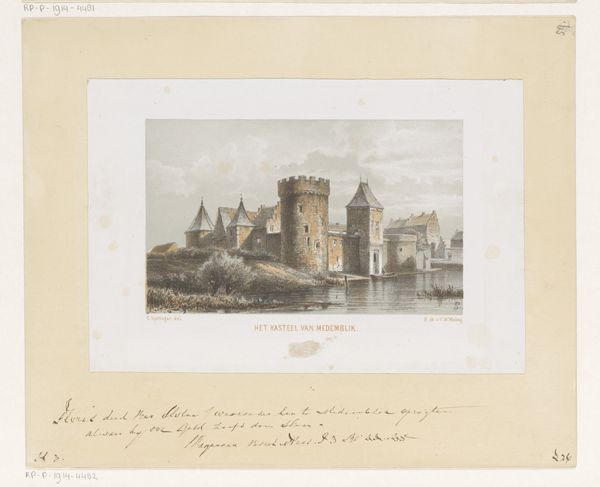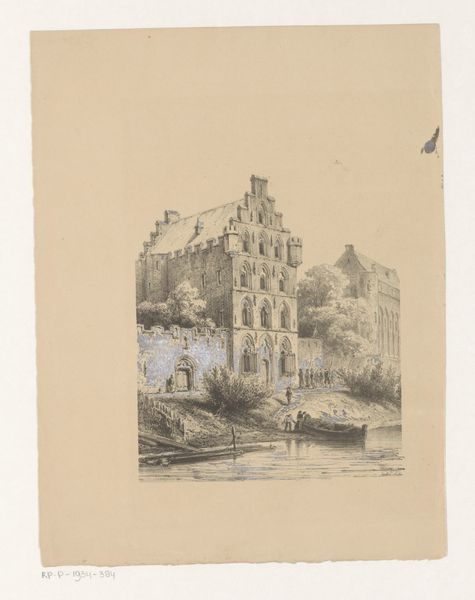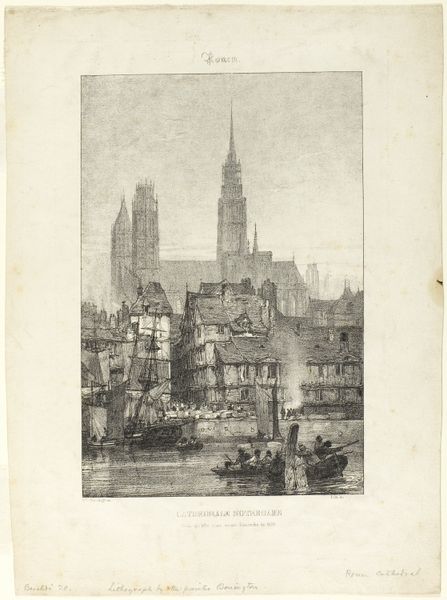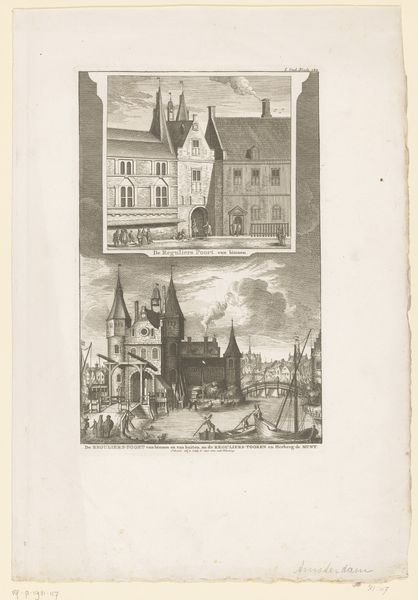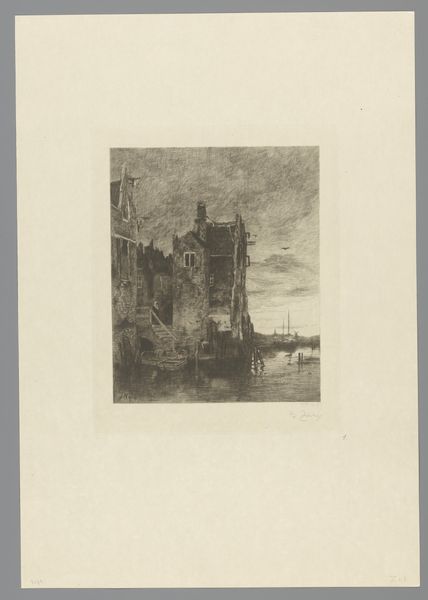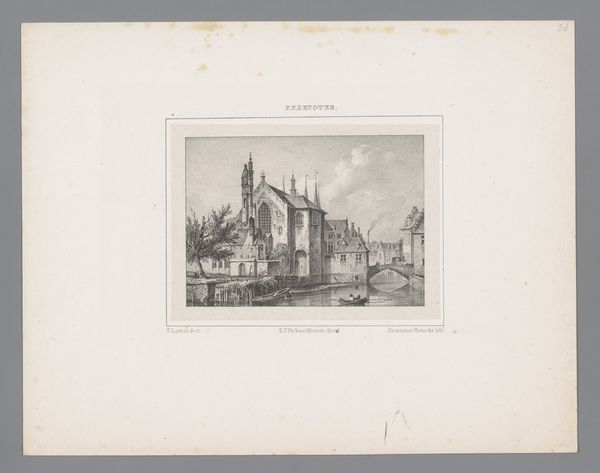
print, etching
#
pencil drawn
# print
#
etching
#
landscape
#
cityscape
#
realism
Dimensions: height 365 mm, width 270 mm
Copyright: Rijks Museum: Open Domain
Editor: So, this is Johannes Hilverdink's "Grimburgwal in Amsterdam," dating from about 1847 to 1863. It’s an etching, and I’m immediately struck by the contrast between the busy canal and the stillness of the architecture. What's your take? Curator: Well, as a historian, I look at this image as a document of its time. It offers insight into the urban fabric of mid-19th century Amsterdam and the way it was presented to the public. What do you notice about the people in the image? Editor: There are figures on the bridge and in the boats. It feels like everyday life captured in a moment. Curator: Exactly! And this "everyday life" is carefully constructed. Notice the cleanliness, the order. How might this image have functioned within the broader context of Dutch national identity? Think about the rise of museums and art collecting during this period. Editor: Are you saying this wasn’t just about depicting Amsterdam but also about shaping its image for both locals and maybe international viewers? Curator: Precisely. Etchings like this became widely available and were circulated among the rising middle class, shaping their understanding of their own city and its place in the world. Consider the relationship between art production, commerce, and civic pride. Editor: That makes me look at the details differently, like the precision in depicting the buildings and the light. It feels like it's selling a vision of Amsterdam. I thought it was just a cityscape. Curator: And what’s wrong with a cityscape also serving as a powerful piece of social and political messaging? The art world has always played such dual roles. Food for thought, yes? Editor: Definitely! I see so much more than just a pretty picture now. Curator: As do I when discussing this with someone else; the process is symbiotic.
Comments
No comments
Be the first to comment and join the conversation on the ultimate creative platform.
